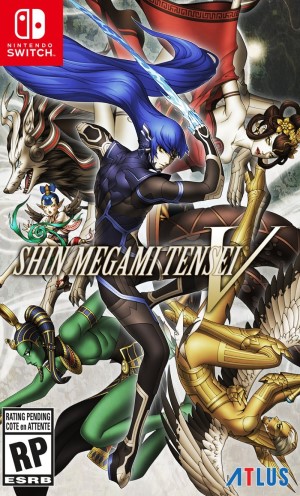
Shin Megami Tensei 5 is probably Atlus’ most ambitious and mechanically dense role playing game ever. The sheer scope and size of the world, along with the options afforded to the player, can be mind boggling, and the first time you are properly dropped into the game’s gigantic expanses you have to traverse (after a deceptively low-key and restrained opening), it can feel daunting and liberating both at once – the game is giving you a massive playground, and telling you to go nuts. And the best part is, what you see then is ultimately only a small fraction of the full extent of the game’s world – the game keeps revealing more and more of the world to the more you go into it, and the jaw dropping effect it can have never really loses its potency, no matter how many times Shin Megami Tensei 5 repeats this one trick.
That giant world, combined with how it is designed, and how the player interacts with it, is probably the single biggest change to Shin Megami Tensei with this newest game. This has always been a series of unforgiving dungeon crawlers. At its heart, SMT5 is actually still that, and it’s designed that way, but it re-contextualizes that mechanical core so that rather than feeling like you’re being put through a gauntlet of dreary and bleak underground labyrinths, it feels like you’re slowly traversing your way through a massive open world, exploring it and mastering it in what can only be described as a post-apocalyptic hero’s journey.
And it’s an incredibly well designed world – the maps are massive and vast, and they curl in upon themselves with incredible amounts of verticality to add to their wide expanse. And they’re filled with distinct landmarks and visually interesting features, inviting the player to go explore, (possibly luring them into an area with a high level demon that will knock them out in one turn), and enabling traversal and exploration of the world diegetically and through intuitive memory alone. There’s a pretty detailed in-game map you can pull up and reference to try and get your bearings, but nothing is ever as useful as just stopping, possibly moving your way up to high ground, and then getting the bearings of the world around you to try and figure out where you want to be going next.
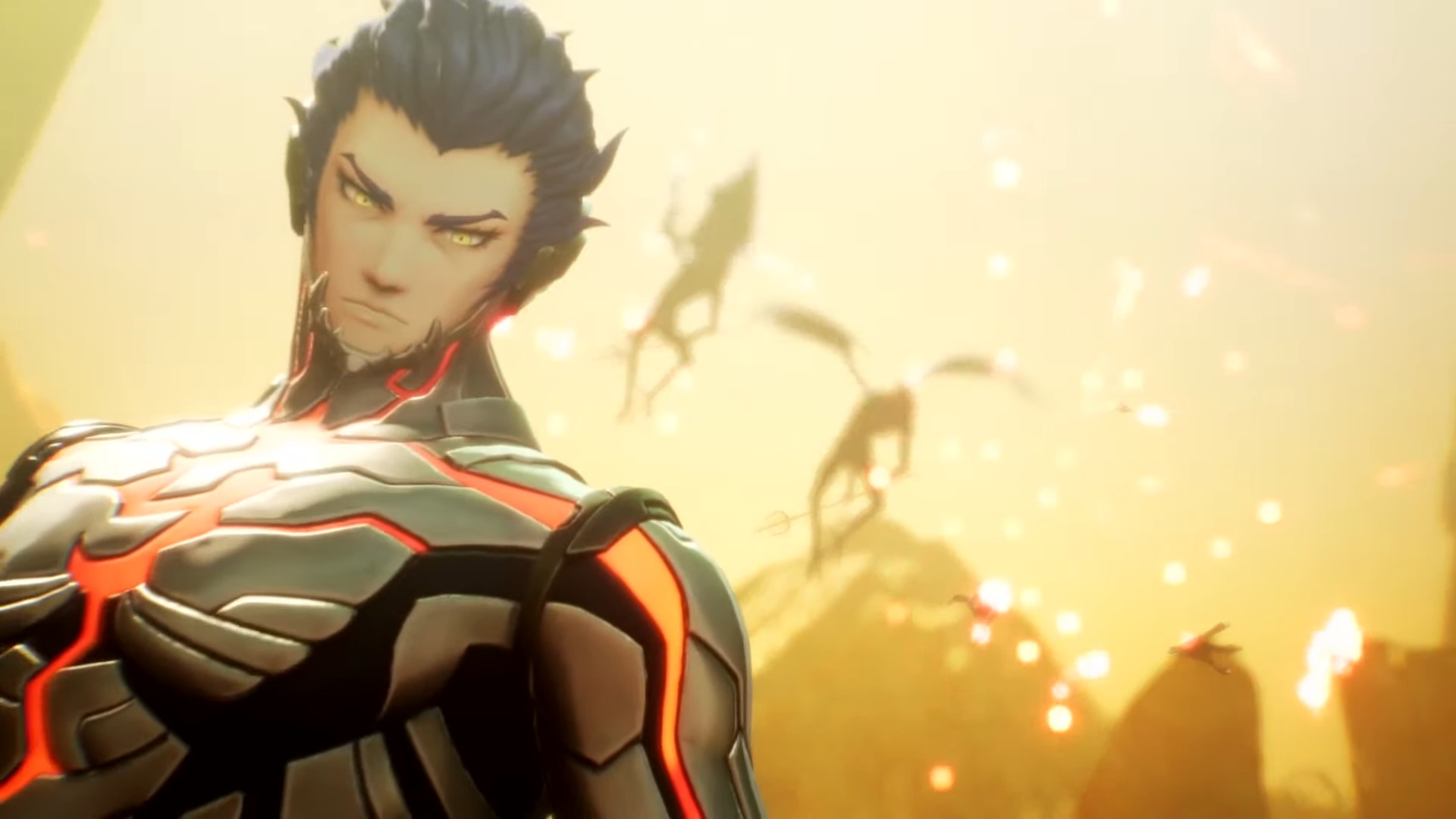
"At its heart, SMT5 is still a dungeon crawler, and it’s designed that way, but it recontextualizes that mechanical core so that rather than feeling like you’re being put through a gauntlet of dreary and bleak underground labyrinths, it feels like you’re slowly traversing your way through a massive open world, exploring it and mastering it in what can only be described as a post-apocalyptic hero’s journey."
It’s full of secrets and trinkets to encourage exploration too. From side quests you can stumble upon by going off the beaten path to collectibles that you can trade for some pretty valuable items, to just a surprising amount of visual variety and vistas that belie any sense of scale, there’s a lot in Shin Megami Tensei 5’s ruined version of Tokyo that can invite the player to spend some time properly exploring it, and fully mastering its ins and outs.
Thankfully, SMT5 makes the actual act of traversal and movement fun as well. The main character, the Nahobino, is more limber and mobile in their basic movements to begin with, but you’re given additional mobility options, including a rapid sprint, a jump, and a slide that is automatically initiated if you’re going downhill at higher speeds. The jump and the slide especially are crucial in you going “out of bounds” of the world – at first, it might seem like the mountains or rocks hemming you in, or the steep incline sloping away downwards, are meant to be boundaries to the world, but understanding that you can jump up those rocks or slide down those slides, and access totally new areas of the world, can dramatically alter how you approach SMT5.
They break the game free of the oppressive shackles of the at times overbearing dungeon crawling design of the older games – now you’re given a destination, but you’re entirely free to make your own way there, however you want. The impact this emphasis on the world and on discovery and movement can have cannot be overstated.
I’ve spent so much time talking about the game’s world, but we haven’t even gotten to the meat of the experience yet – which is the actual battling and demon collection aspect. In Shin Megami Tensei games, every enemy in the world that you encounter can be recruited to join your party (other than some obvious exceptions, such as story bosses), meaning that essentially, the series is like a bleak, mature, post-apocalyptic, and twisted version of other monster collection RPGs that players might be more familiar with.
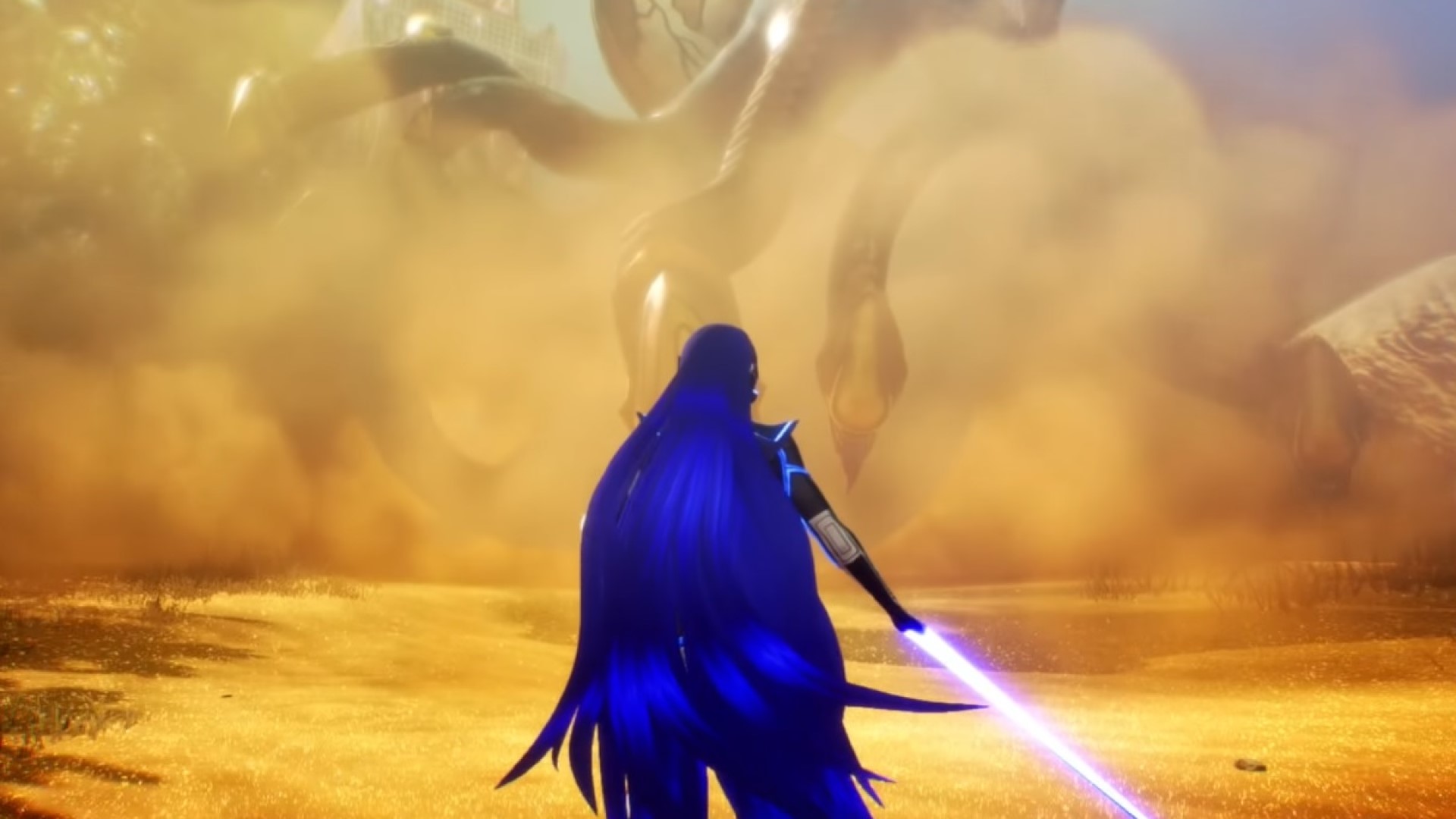
"The thing that makes the game so interesting, however, is that enemies get the exact same advantages as you do. "
Once recruited, these demons fight by your side in perhaps one of the deepest and most nuanced turn based combat systems that there is. The SMT series is famed for the “Press Turn” combat system that debuted back in Nocturne in 2003, a derivative of which is actually used in Atlus’ own Persona series. The Press Turn system is designed around exploiting enemy weaknesses, and covering your own – you get one action per party member per turn, and if on that action, you strike an enemy’s weakness, whether by hitting their elemental vulnerability (such as a Fire attack on an Ice based demon, or a Light attack on a Dark based demon, or simply by scoring a critical hit), you gain yourself another extra action on that turn.
On the other hand, missing an attack, or attacking an enemy’s strong point (such as using an Electric attack on an Electric demon) can have brutal repercussions, including losing you all your actions for that turn (though thankfully that can be pretty rare). Played smartly, you can essentially chain together enough actions on your first turn that the encounter is done before the enemy even gets a chance to attack back.
The thing that makes the game so interesting, however, is that enemies get the exact same advantages as you do. Meaning if, on their turn, they end up attacking your weaknesses, or scoring a critical hit, they score themselves extra actions too. This can make combat encounters tense, nerve wracking affairs, particularly in encounters when you are fighting a demon for the first time, and don’t yet know what will be effective, and what won’t be, or ones in which the enemies get to go first. Simultaneously, this is also the exact reason you need to recruit as many demons as possible, to have broad coverage for hitting strengths and covering weaknesses.
Recruiting demons is another time honored SMT tradition that’s back in full-form in SMT5. Every demon you encounter can be talked to in combat, and based on a lot of factors, ranging from their personality, to what demons you carry in the party, to even how the battle has gone until then, these conversations can go hilariously differently each time. But as you grow stronger, beating them to within an inch of their live and then literally taking away all their lunch money, or having them beg you to not kill them and offer to join up with you instead, can feel extremely empowering. Negotiations in SMT5 are significantly harder than in Persona 5, and especially Persona 5 Royal, both of which gave players a lot of cues to know what to say, when to say it, and how to say it – but that also means there’s a lot more mechanical nuance and depth to them as a result.
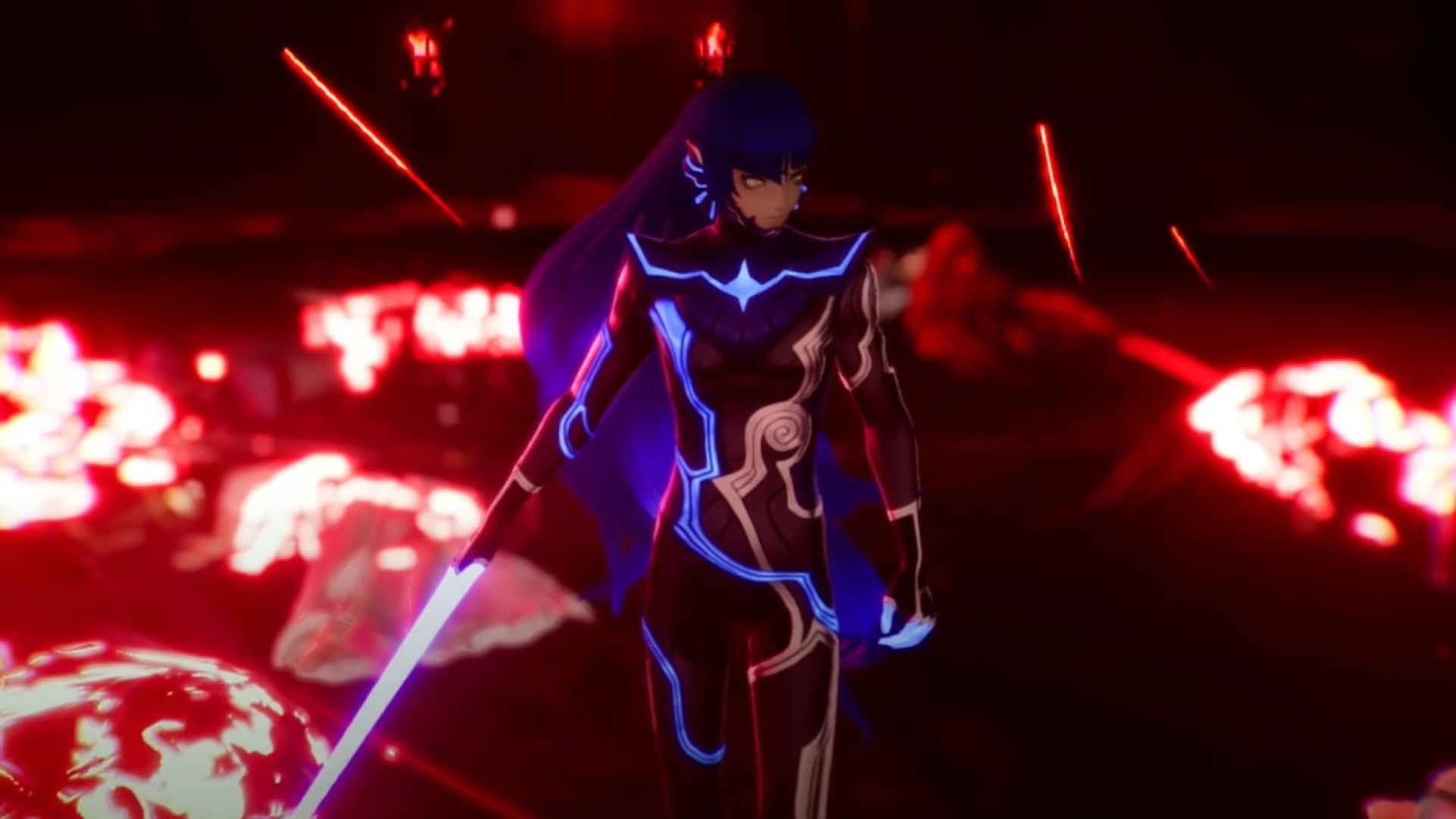
"SMT5 is simply a much more accessible game than any previous one in the series, something that it achieves without dumbing down the bite that has made the games so popular within their niche to begin with."
This combat system and demon recruitment mechanic is paired with a frankly staggering amount of mechanical diversity and depth, giving the player a ridiculous amount of options on how they want to build their character and their parties. You can, of course, decide on the specific composition of your party down to the individual, you can decide what exact attacks each of those party members will have, you can decide what your own attack loadout will be (and change it at any time you want), you can decide what your elemental affinities and resistances are (and change those at any time).
You get to invest points into attributes each time you level up, giving you a lot of flexibility in your character build, you can fuse existing demons into new ones, you can unlock a lot of support skills to help you in battle, negotiations, fusions, and even traversal and exploration. There’s just a staggering amount of mechanics and systems in this game. And yet, in what is one of the best cases of onboarding and tutorializing I have seen in a game this deep in a very long time, they are meted out so organically and steadily that you don’t even realize how many mechanics the game is throwing at you, and it’s only hours after you’ve been caught in an extremely addictive and self-perpetuating gameplay loop that you realize just how much is going on, and how much you have effortlessly mastered with no friction.
That’s one of SMT5’s greatest triumphs over its predecessors, actually – it’s simply a much more accessible game than any previous one in the series, something that it achieves without dumbing down the bite that has made the games so popular within their niche to begin with. It takes its time to properly onboard the player, but never at the expense of slowing things down; you can only save at specific save points, though the game lets you return to your last save point at any time; it offers multiple difficulty levels, and freely lets you change them at any point you want (though you can only select Hard when starting the game – swap out of it at any point, and you’re locked out of it from then on). And, of course, as already mentioned, the huge emphasis on exploration and discovery as well can help things remain appealing for those who might not like the relentless flow of battles of the previous games in the series.
Not all its attempts at accessibility are successful, however; even on the easy and normal difficulties the game can be brutally tough, and bosses can be frustrating walls of difficulty spikes that can seem totally hopeless to beat for a while. In fact, a lot of the boss encounters verge on being outright unfair, with such a very specific set of strengths/weaknesses/attacks/and health pools that unless you’re managing to intuit the exact and very specific thing the game wants you to do to take them down, you’ll just be repeating those encounters, over and over and over again, with no visible progress made.
It can feel unfair when you’re leveraging every mechanic the game has to try and win over the bosses and still making no progress – because with these bosses, the game doesn’t just want you to use every mechanic at your disposal, it wants you to use every mechanic at your disposal in one very specific way, or you’re just stuck. Depending on the kind of player you are, it can feel empowering and triumphant when you finally overcome these bosses – but on the flip side, it can also feel as though the sense of victory doesn’t really compensate for just how maddening these bosses can be, and how much they can kill the game’s pace.
At launch, a final “story mode” difficulty mode will be offered, which I presume can be used as a last fallback measure for those who decide they’ve spent far too much time on a boss, and just want to get a move on at that point, but I do wish the standard difficulties were better balanced to not need the player to brute force their way through encounters this way.
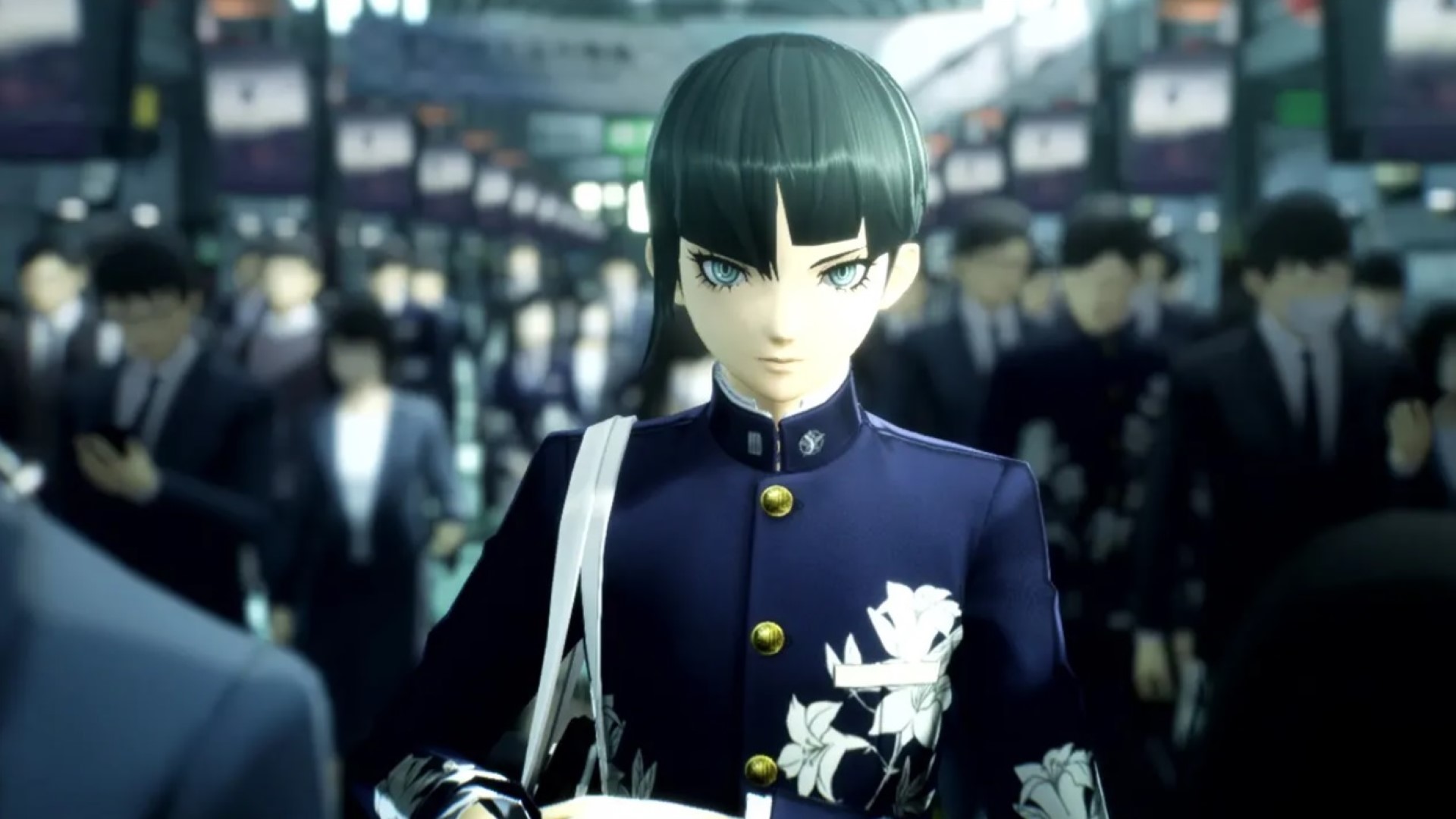
"Unfortunately, it does suffer from some technical shortcomings, of the kind that any Unreal Engine 4 game does on the Switch, and especially one this massive and ambitious."
The difficulty isn’t the only problem with the game either – unfortunately, it does suffer from some technical shortcomings, of the kind that any Unreal Engine 4 game does on the Switch, and especially one this massive and ambitious. To its credit, the game generally runs well and at a steady clip – but it achieves this by running at subnative resolutions (which, especially in early areas where there are a lot of shimmering effects, can lead to a very soft image quality), and in some occasions, it still does stutter. Thankfully, most of these stutters are limited to UI transitions – which is a shame, because it’s such a slick UI, but if I have to have stutters, I’d rather they be there than anywhere else. Some later areas that have a lot of particle effects and transparencies see some drops too, but those are exceptionally rare.
The issues with the technical presentation are definitely unfortunate, because on the whole, the game runs really well, and looks great, and none of the shortcomings are deal breakers. It benefits from an extraordinarily strong sense of style and aesthetic, and it mostly does justice to its visuals and scope. But the fact that it’s such a polished and ambitious game is what makes those shortcomings stand out more when they do happen. Thankfully, the strong sense of art style, along with a banger of a soundtrack, help compensate for those presentation deficiencies when they do crop up.
Which is good, because those visuals and aesthetics are essential in doing justice to the game’s story. Shin Megami Tensei games have always opted for more background and environmental storytelling, rather than direct narratives told via cutscenes, it’s always managed to deliver a great narrative in the end. SMT5 is really no exception there. While the story and storytelling here are both very different from the type you would expect, focusing more on high concept philosophical stakes and player agency than characters and plotting, it still sets up an incredible conflict and a broader sense of mystery, involving the fate of Da’at, a Tokyo that lies in ruins after an apocalyptic war fought between the forces of good and evil some time ago, how it ties to the Tokyo the protagonist grew up in, and the protagonist’s own fate as the Nahobino, a forbidden kind of fusion between a human and a demon who could hold the power to reshape the world. It’s a very well told story, with sharp writing and some great voice acting (as is usually the case with Atlus games), and it manages to keep players invested and intrigued by exactly what is going on, right until the moment when it pulls the rug from under them – and then things end up getting crazy. Obviously, I’m not going to get into the specifics of what the story is, or even how it’s told – but I will say that it’s extremely effective, and done very well within the confines of what it is.
Shin Megami Tensei 5 is a great game, and a triumph at mostly everything it sets out to do. A staggering amount of mechanical depth, and a renewed focus on exploration, discovery, and traversal in a gigantic world, paired with an intriguing story, and a stunning sense of ambition, all come together to make this one of the most ridiculously expansive and ambitious RPGs I’ve ever played. That’s not to say it doesn’t have problems, and some of its technical issues are disappointing, as can be the insane difficulty spikes – but the game is honestly, legitimately, so good, and so addictive, that those issues matter far less than they would in a lesser game. Which isn’t to say they stop mattering – they’re there, and you notice them, but they can’t detract from just how well the game ends up doing pretty much everything else that it sets out to do. Fans of roleplaying games of any ilk would do well to look into Shin Megami Tensei 5 – it’s a fantastic game on pretty much every level.
This game was reviewed on Nintendo Switch.
The emphasis on exploration, discovery, and traversal reenergizes the gameplay loop by recontextualizing it as something far more compelling; the world is massive, varied, and really well designed; a staggering amount of mechanical depth; the battle and demon recruitment system is better than ever, and probably among the best combat systems in any RPG ever; incredibly strong art style and soundtrack; great story and storytelling.
Insane and frankly mostly unfair difficulty spikes that can be hard to wrangle for the average player; technical issues such as sub-native resolution and some stuttering.










